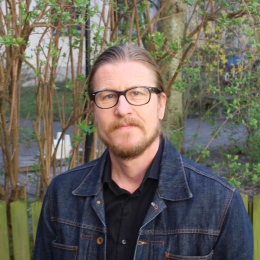Research project Harm reduction and control
Policing people who use illegal drugs in a changing drug political landscape
Policing of illegal drug use is a cornerstone in the abstinence oriented Swedish drug policy. However, as harm reduction has become an increasingly important tool for improving the health and wellbeing of people who use drugs in Sweden, police and private security officers are expected to adhere to harm reduction principles. The simultaneous demand for both control and harm reduction creates a difficulty that must be dealt with in practice. This is addressed in the research project which is financed by Forte between the years 2025-2027. The aim is to analyze how people who use drugs experience the tension between harm reduction and control, how this tension is approached in training programs for police and private security officers, and how it is articulated and handled by these policing agents in their daily work. The project also aims to offer suggestions on how illegal drug problems can be policed without disturbing the policy goal of harm reduction.
Project description
Research questions: Policing of illegal drug use is a cornerstone in the abstinence-oriented Swedish drug policy. However, as harm reduction has become an increasingly important tool for improving the health and wellbeing of people who use drugs (PWUD) in Sweden, police and private security officers (policing agents) are expected to adhere to harm reduction principles. The simultaneous demand for both control and harm reduction creates a difficulty that must be dealt with in practice. This is addressed in the project.
The aim is to analyze how PWUD experience the tension between harm reduction and control, how this tension is approached in training programs for police and security guards, and how it is articulated and handled by policing agents in their daily work. The project also aims to offer suggestions on how illegal drug problems can be policed without disturbing the policy goal of harm reduction.
Data and methods: We will collect and analyze qualitative data in three sub-studies to provide new knowledge about the tension between harm reduction and control. Data include individual interviews with PWUD, focus groups and individual interviews with policing agents, plus education documents and interviews with police education staff. The analyses will provide crucial insights into the complex and often hidden interaction between PWUD and policing agents.
The theoretical perspectives of risk environments, institutional logics and boundary work will be used to increase understanding of how the tension plays out in practice.
Societal relevance and utilization: The balance between maintaining public order and helping people in need is particularly difficult when those who are targeted by interventions are also committing crimes. Research shows that effective harm reduction must be organized in ways where policing does not undermine intended outcomes. Our in-depth analysis of the phenomenon will offer valuable knowledge about logics, strategies and negotiations related to how PWUD are approached by police and private security officers, which is crucial if we are to reach the goal of minimizing drug harms.
Project members
Project managers
Josefin Månsson
Senior lecturer, associate professor

Members
Mats Ekendahl
Professor

Patrik Karlsson
Professor

Katarina Winter
Associate Professor

Martin Bergkvist
Fil.Dr.


